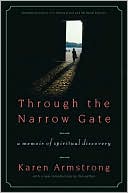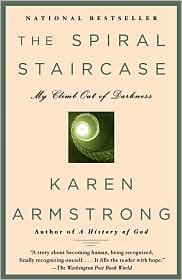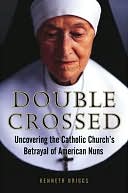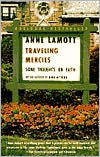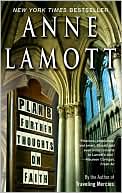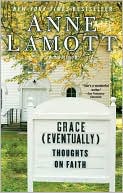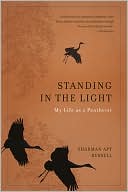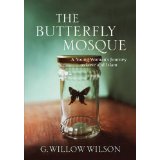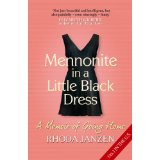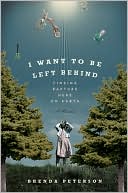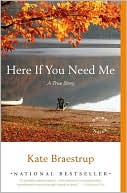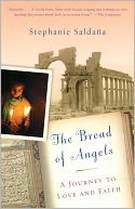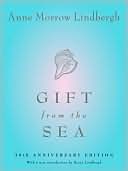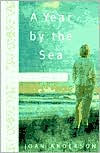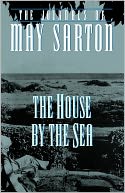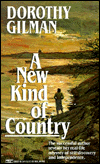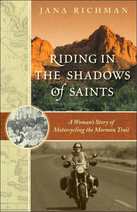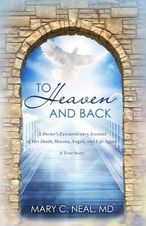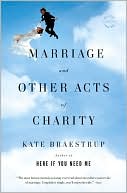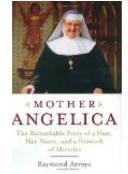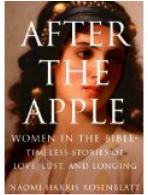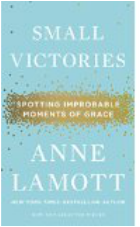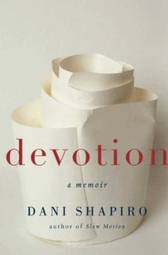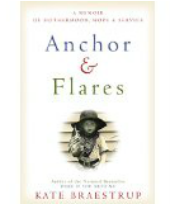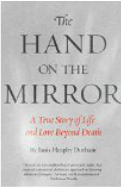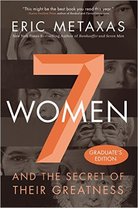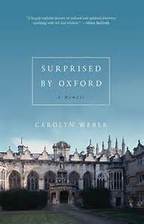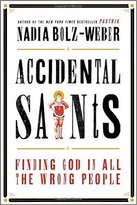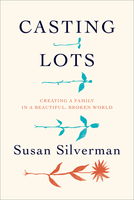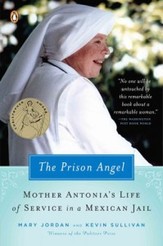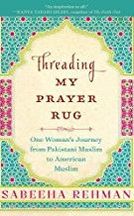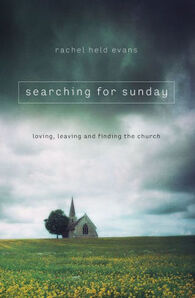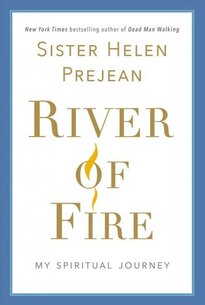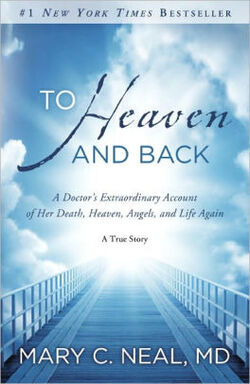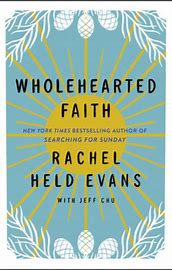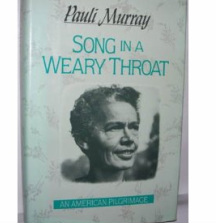
Song in a Weary Throat: An American Pilgrimage Pauli Murray 1987 |
The Reverend Dr. Anna Pauline (Pauli) Murray (November 20, 1910 – July 1, 1985) was an American civil rights advocate, feminist, lawyer, writer, poet, teacher, and ordained priest. . Through her numerous work she demonstrated that knowledge had to be used in order to achieve justice and freedom in order to give back to society. Murray was raised in the segregated South were she learned to live as an interracial women, for she was black, white, and Cherokee Indian. Murray later on describes herself as "biologically and psychologically integrated in a world where the separation of the races was upheld by the Supreme Court of the United States" (Leland, The Chapel Hill Newspaper). In 1946, Murray received recognition for her service to society, as "Woman of the Year" by the National Council of Negro Women. As well as the Eleanor Roosevelt Award from the Professional Women's Caucus in 1971 and honorary degrees from Dartmouth, Radcliffe, and Yale, as well from other colleges and universities. During her work she discovered enlightenment, for she later said, "I had never thought of white people as victims of oppression, but now I heard echoes of the black experience when I listened to white workers tell their personal stories of being evicted, starved out, beaten, and jailed.... Seeing the relationship between my personal cause and the universal cause offreedom released me from a sense of isolation, helped me to rid myself of vestiges of shame over my racial history, and gave me an unequivocal understanding that equality of treatment was my birthright and not something to be earned.
Pauli Murray died of pancreatic cancer[11] on July 1, 1985 in Pittsburgh, Pennsylvania. She had her funeral rights held on July 5 in Washington, D.D, at the National Cathedral. According to Beverly Guy-Sheftall's book "Gender Talk," Murray was a lesbian who did not disclose it to the public. ,Her autobiography Song in a Weary Throat: An American Pilgrimage was published posthumously in 1987, it was her last piece of work she wrote. Source: Wikipedia |

The Irrational Season Madeline L'Engle |
In The Irrational Season, L'Engle does not give any easy spiritual answers, yet somehow a sense of comfort prevails throughout the pages. Never preachy, this is a book to savor again and again. We share L'Engle's struggle as she grapples with age-old questions. One is awed by the grace with which this woman deals with conflict, both internal and external, even as she is sharing her deepest doubts. As we read, we become a part of L'Engle's spiritual quest and we make it our own. Reviewed by Joan Shaddox Isom |
|
After the Apple: Women in the Bible:
Stories of Love, Lust, and Longing Naomi Rosenblatt 2013 |
Naomi Harris Rosenblatt is a Jewish psychotherapist who has gained much of her understanding about people from the Bible. As she states, "by portraying life as it is, with all its contradictions and complexities, the Bible has guided me along the path of compassion, empathy, and understanding of others." In "After the Apple: Women in the Bible," she uses the Jewish technique of midrash, reinterpreting Biblical narratives in light of today's circumstances, to delve into the lives of several notable women of the Hebrew Scriptures.
In Rosenblatt's capable hands, these women are three-dimensional. They struggle with decisions and with odds stacked against them. Rosenblatt analyzes their motivation and their influences. None are purely good or purely evil (although Jezebel does come close!) Most of them are simply trying to survive and insure that the Jewish faith will continue to the next generation. Several, including Sarah, Rebecca, and Rachel, conceive children late in life, having faced the difficulty of infertility in a world where much of a woman's value was the children she gave her husband. Some such as Leah, Jacob's first wife, and Michal, David's first wife, are stuck in unhappy marriages. While Leah creates her own identity as mother to her children, Michal becomes a bitter woman who seals her own fate when she humiliates the king in public. Later on, another wife of David's, Bathsheba, will exert her influence in having her son Solomon named to the throne to succeed his father. Ruth and Esther are the two women for whom books of the Bible have been named. Both use seduction as a means of getting what they need. Ruth seduces Boaz so that he will take her as his wife and provide support for her and her mother-in-law Naomi. Their great-grandchild is King David. Esther is a member of the Persian king's harem. After one night with her, he decides to make her queen. Ultimately, she will use her influence to prevent the mass killing of all Jews living in Persia. Rosenblatt acknowledges that the biblical scribes (most, if not all, of whom were men) were very sympathetic to women. "The risks they took, their heroism, and their resourcefulness" was recorded in detail. Exploring the lives of the women in "After the Apple" can help us understand our own lives and difficult circumstances more clearly. Reviewed by Patrice Fagnant-Macarthur |
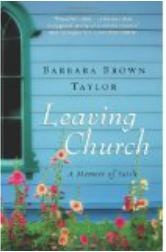
I was fascinated by Barbara Brown Taylor's searchingly honest story of her
struggle between wanting to serve God as an Episcopal priest and
wanting to love God as one of God's beloved children. Doesn't sound as
if the two desires conflict, does it? But in fact they do, and this is
her story of that profoundly wrenching conflict and how she has tried to
resolve it.
Taylor, who as a child fell in love with God as first revealed in the beauty of nature, became a famous preacher and famous writer in the Episcopal Church. She describes how much she loved the people both in and out of church that she served. She also describes how much she loved God, and how the busy-ness of her ministry came between her heart and God. Finally she got to a breaking point, and she chose: she ceased her "professional" ministry and became a college professor of religion. And after a dark night of the soul she found herself where she believes she needs to be -- back in "right relationship" with the Divine. But this all came at a high price. She is quite unsparing in her description of what she's lost as well as what she's gained.
She's also eloquent about the pressures on the Episcopal Church, and sounds a prophetic warning about its future if it continues in the hierarchical way it currently follows.
Reviewed by a reader in Washington DC
Leaving Church: A Memoir of Faith
Barbara Brown Taylor
2009
Taylor, who as a child fell in love with God as first revealed in the beauty of nature, became a famous preacher and famous writer in the Episcopal Church. She describes how much she loved the people both in and out of church that she served. She also describes how much she loved God, and how the busy-ness of her ministry came between her heart and God. Finally she got to a breaking point, and she chose: she ceased her "professional" ministry and became a college professor of religion. And after a dark night of the soul she found herself where she believes she needs to be -- back in "right relationship" with the Divine. But this all came at a high price. She is quite unsparing in her description of what she's lost as well as what she's gained.
She's also eloquent about the pressures on the Episcopal Church, and sounds a prophetic warning about its future if it continues in the hierarchical way it currently follows.
Reviewed by a reader in Washington DC
Leaving Church: A Memoir of Faith
Barbara Brown Taylor
2009
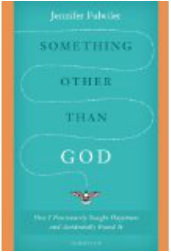
When Jennifer stood in a Catholic Church on
Easter 2007, preparing to become Catholic, there was hardly a more
unlikely convert. Born and raised in a skeptical home, which valued Carl
Sagan more than Jesus, Jennifer developed an ardent atheism. She
rejected God, mocked religion, promoted abortion, and chased happiness
above all through pleasure, work, money, and partying. But then
she met Joe. Joe was brilliant. He had multiple degrees from Ivy League
institutions and was rapidly climbing the corporate ladder. Yet,
strangely, he identified as a Christian. "How could such a smart man
believe something so ridiculous?" Jennifer wondered.
That led her to rigorously examine the claims of Christianity, if only to prove them wrong. She gorged on books. She frequented online comment boxes and discussion boards. She even started a blog which invited Christians to counter her atheism. This painstaking research, combined with difficult questions about meaning, death, and existence, slowly led Jennifer to believe that God existed, and even more that Jesus was God in the flesh. Though obviously troubling, she could have accepted this "mere Christianity" and moved on. But after exploring many Protestant churches, she distressingly realized that the evidence was pushing her toward a far more unsettling destination: the Catholic Church.
Smart, inspiring, and absorbing, Jennifer's book will go down as one of the best spiritual memoirs since "Mere Christianity." It will lift her to her rightful place alongside Augustine and Lewis, troubled converts, talented memoirists, and courageous intellects who each followed the truth to its beautiful and unsettling conclusion. Reviewed by B Vogt
That led her to rigorously examine the claims of Christianity, if only to prove them wrong. She gorged on books. She frequented online comment boxes and discussion boards. She even started a blog which invited Christians to counter her atheism. This painstaking research, combined with difficult questions about meaning, death, and existence, slowly led Jennifer to believe that God existed, and even more that Jesus was God in the flesh. Though obviously troubling, she could have accepted this "mere Christianity" and moved on. But after exploring many Protestant churches, she distressingly realized that the evidence was pushing her toward a far more unsettling destination: the Catholic Church.
Smart, inspiring, and absorbing, Jennifer's book will go down as one of the best spiritual memoirs since "Mere Christianity." It will lift her to her rightful place alongside Augustine and Lewis, troubled converts, talented memoirists, and courageous intellects who each followed the truth to its beautiful and unsettling conclusion. Reviewed by B Vogt
Something Other than God
Jennifer Fulviller
2014
Jennifer Fulviller
2014
|
Devotion
Dani Shapiro 2010 |
|
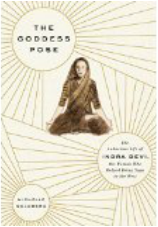
It’s hard to imagine anyone more perfectly positioned in history than the chameleon-like Indra Devi, rightly credited in Michelle Goldberg’s exhilarating new biography, THE GODDESS POSE, with pioneering yoga as a physically, socially and spiritually acceptable discipline in the Western world.
Born at the close of the 19th century (1899), living at her famous frantic pace throughout the entire 20th century, and dying almost serenely at the dawn of the 21st (2002), Devi witnessed virtually every major conflict, cultural phenomenon and political upheaval of what arguably has been the most turbulent era in global history. And she did so on no fewer than four continents.
Born in Latvia into the Russian minor nobility and periodically reinventing herself through half-a-dozen name and career changes, as well as numerous geographical moves (she was technically a stateless person for much of her life), the complex woman who ultimately identified as Indra Devi didn’t achieve sustained success as a proponent and teacher of yoga until she was almost a senior citizen. At a
time of life when many career professionals --- especially those in the physical arts --- are gearing down into well-earned retirement, Devi was relentlessly immersed in the American celebrity lecture circuit and teaching brand-name stars like Greta Garbo and Marilyn Monroe in her Hollywood studio.
Finding your personal and public groove in late middle age is perhaps not as unusual for “zoomers,” the actively elder baby-boomer (post-1945) generation that exerts so much financial and political clout these days. But as Goldberg, an award-winning investigative journalist and initially underwhelmed yoga student, recognizes throughout THE GODDESS POSE, Devi was consistently atypical of her own era. She attracted attention in exotic and unusual (sometimes even potentially dangerous) contexts by living as an extreme definition of the pre-feminist “free spirit.”
To her credit as a diligent and meticulous author (don’t overlook the impressive volume of source notes closing her book), Goldberg does not take any easy roads through yoga history and fashion; nor does she pose, goddess-like or not, as an expert on the relative merits of yoga’s several dozen classic postures, or asanas. Instead, within the context of Devi’s own exploratory life and times, she offers readers an even-handed sampling of representative leading lights, trends and opinions through which Devi was influenced, and from which she eventually developed her own philosophy and esthetic. In other words, if you want to learn in detail about the many gurus, sources, branches, styles and practices of yoga, you want another book, not this one.
Reviewed by Bookrecorder
|
I have read all of Kate Braestrup's book and up until this one, her first book, Here If You Need Me: A True Story, was my favorite. This one, however, touched me deeply. In between relating stories about the accidents and deaths she and her fellow Maine Wardens have to deal with, Braestrup intertwines her own experiences as a mother, wife, and chaplain. And all of these stories are ones that any parent, (any person, really ) who has ever cared for and worried about another human being can identify with. No one is immune from life's heartaches, but God's grace and love helps us muddle through. I have already recommended this book to friends and family.
Reviewed by Poem girl |
.
|
Anchors and Flares
Kate Braestrup
2015
Kate Braestrup
2015
Seven Women
Eric Metakas
2015
Eric Metakas
2015
|
Surprised by Oxford
Carolyn Weber 2011 |
Carolyn Weber's beautifully penned memoir of her personal faith journey is a delight to read. Her descriptions of Oxford are enough to make any Anglophile salivate. As a professor of English literature and an expert in the Romantic poets, she intersperses snippets of classic poetry throughout. Her ongoing references to the poetry of John Donne and John Milton especially captured my attention, their insights having been instrumental in my own spiritual walk. In the end, I want to dust off the Norton anthologies saved from my own college lit classes and immerse myself once more.
When the author is awarded a full scholarship to do graduate work at Oxford University's Balliol College, she hasn't an inkling of the path on which she is setting out. In the company of her colleagues and friends, and spurred on by one particular theology student who lives across the hall, she explores the deep, existential questions that have nagged her for years. For the first time in her life she reads a Bible--what she says is "the most compelling piece of creative nonfiction I had ever read. If I sat around for thousands of years, I could never come up with what it proposes, let alone with how intricately Genesis unfolds toward Revelation." Following in the footsteps of C.S. Lewis, the truth of God's Word eventually leads her first to believe in God and ultimately to believe in Jesus Christ as the Son of God. Carolyn's journey unfurls as a twofold romance: even as she is being courted by the Divine Lover, she is also courted by "TDH" (Tall, Dark, & Handsome). Conversations with this particular lover of God (and with other friends, both believers and non-believers) serve as the catalyst for her search. The questions had always been there; TDH challenges her to finally seek hard after the answers. Reviewed by Proof Rock |
|
Accidental Saints is like reading a combination of David Sedaris, Anne Lamott and Jesus Calling. Bolz-Weber has an interesting, entertaining and at times inspiring voice as she writes something of a spiritual memoir here. It is does revolve around the author; she is confessional and reflective. At times, she is self-deprecating and humble; while, at other times, she is bold and assertive.
Bolz-Weber writes as a Christian pastor, so the book is inherently pastoral, theological and spiritual. She shares meaningful stories and is most appealing when being brutally honest and vulnerable in her own communications and relationships with God and others. Her interactions with people are strikingly moving in myriad ways. As she opens up her story to readers, readers are naturally led to examine themselves and their own spiritual and relational stories. As a pastor myself, I found that Bolz-Weber’s honest descriptions about thoughts, attitudes and questioning as a pastor resonated deeply with me. In her words, I could hear so many of my own struggles verbalized: “Am I doing this right?” “Should I be feeling this way?” “God help!” She ultimately expresses the deep desire shared by so many pastors to share the love of Jesus in the best way to the most people. Conversely, we don’t want to lead people astray, shut people out of the kingdom, or weigh them down with unnecessary burdens. In this line of writing, I think this is a helpful book to pastors to get a grip on our desperation to serve God and be the pastor the people need. She writes that she likes to say with her church that “we are religious and not spiritual.” I love that! Reviewed by Craig Stephans |
"Kee tov. It is good." I opened this delicious book at 11 pm for a quick glance and didn't put it down until I got to the last page. What a beautiful exploration of family bonds, adoption, Judaism, anxiety, race and love. Adoption books are not so hard to come by and as an adoptive mom I've got most of them in the house -- It was a real joy to find a book focusing on transracial adoption from a jewish perspective -- that is very hard to come by and much appreciated. I can't recommend the book highly enough. You know the cliche "I laughed, I cried, it became part of me"? That. And the author's note on The Global State of Adoption was top notch too. The only thing I didn't like is that it kept me up until 1 am because I couldn't make myself put it down.
|
Casting Lots
Susan Silverman
2016
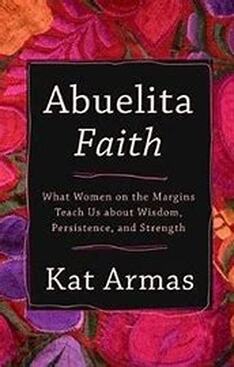
Kat does a beautiful job presenting deep theological concepts, woman focused exegesis, and honoring those that have come before her. The interlacing of words in Spanish throughout the book is beautiful. This book is healing and eyeopening. I don't think there was a page that I read that I didn't highlight a phrase that hit home. Kat's voice is one that we all need to be aware of to help broaden our perspective on what God is and how He works in our midst.
Reviewed by Vannia G
\
Abuelita Faith
Kat Armas
2021
